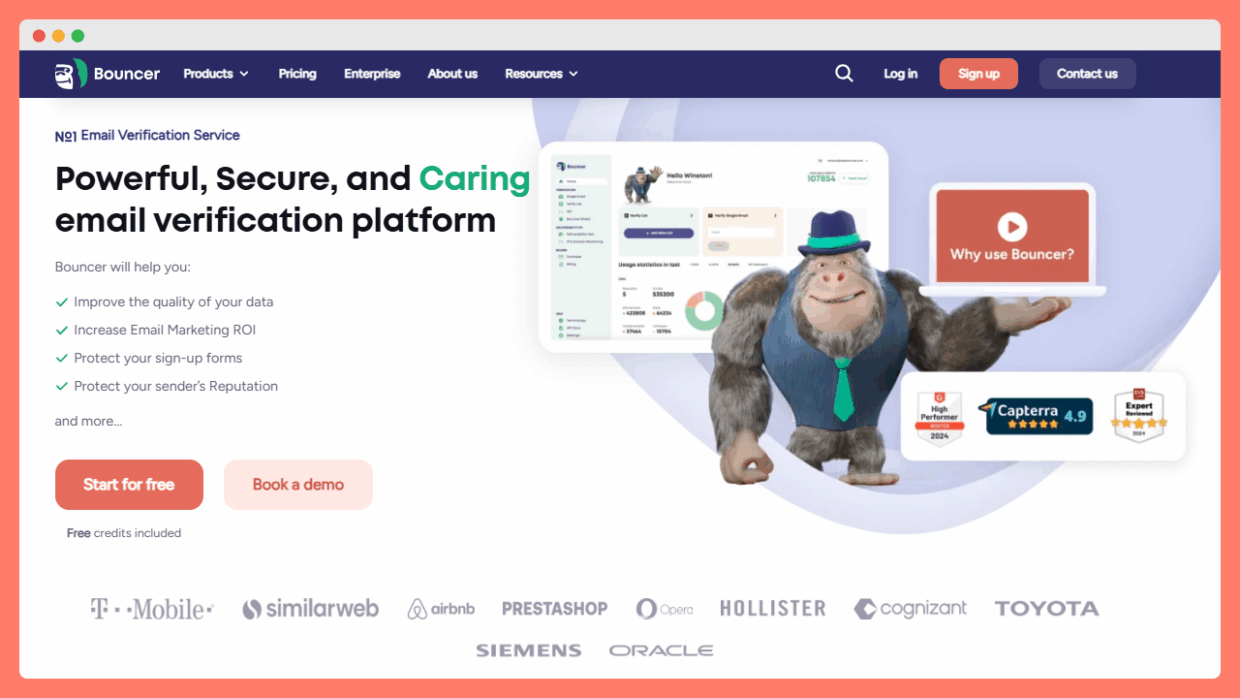That’s where Advanced Maillist Verify first made its name. Back when downloadable programs were the norm, it was a go-to solution for checking email lists and removing dead contacts.
But today, it shows its age next to simple, browser-based services.
This time, we’ll look at how Advanced Maillist Verify works, its pros and cons, and why many teams prefer modern, cloud-based alternatives.
What is Advanced Maillist Verify?

Advanced Maillist Verify (often known as AMV) is a desktop email validation tool that first popped up in the late 2000s. It was built by Tweak Marketing Inc. And its main job? Helping you clean up boring email lists. Think syntax checks, domain validation, MX-record lookups, and sniffing out disposable addresses, all aimed at reducing bounces and protecting your reputation.
What you should know now, is that Advanced Maillist Verify’s version 4.79 is the last known update, which came out in 2014.
Yes, it hasn’t received updates in over a decade. That’s a sign it’s essentially retired, even if it’s still offered.
How does Advanced Maillist Verify work?
Advanced Maillist Verify works on the same algorithm as ISP mail systems do. At its core, the software pulls the mail servers addresses for each specified address straight from DNS records. Then it connects with the found SMTP servers and simulates sending an email message.
It doesn’t actually deliver the message – AMV disconnects as soon as the mail server informs if the address exists or not. This process helps weed out non-existent addresses before they start hurting your delivery rates.
On top of that, the program runs several layers of validation. It performs a syntax check to confirm the email format, verifies domains, and checks MX records. It can even spot disposable or temporary accounts that never belong on a long-term mailing list.
In terms of integrations, AMV was built as just a standalone program, but it can also be plugged into existing systems through COM/ActiveX and CGI/ISAPI interfaces. The package includes detailed documentation, with examples for most major programming languages like ColdFusion and Microsoft Active Server Pages technology.
The program supports popular file formats, including Windows address books, MS Access, Microsoft Excel, and ODBC SQL databases. That means you can connect it directly to your email database, clean it in bulk, and even create exclusion lists that automatically remove invalid addresses.
Advanced Maillist Verify pros & cons
Like most older tools, Advanced Maillist Verify has its highlights. On software download sites, you’ll still see positive notes about how the program runs thorough email checks across lists of any size.
The bundle comes with comprehensive documentation, which developers once appreciated when setting up integrations. And since it supports various programming environments, including COM/ActiveX, ISAPI, and scripts in common languages, it was fairly adaptable back in its prime.
That’s the good news. But when you put AMV in a 2025 context, the cons outweigh the pros.
First, the interface feels frozen in time. The design hasn’t changed in more than a decade, and it shows. Navigating through the menus isn’t intuitive, and anyone used to modern SaaS tools will likely find it clunky.

Second, setup can be frustrating. While the documentation is detailed, the actual process of connecting AMV to databases, proxies, or existing servers is far from smooth. For a small business or marketer who just wants to verify email addresses quickly, it creates extra steps and confusion.
Third (and probably the biggest drawback) it’s not cloud-based.
Advanced Maillist Verify is still a downloadable program that runs on your own system. That means you need a Windows machine, manual updates, and a local database connection. In today’s world, where teams expect browser-based dashboards and one-click integrations with email platforms, this old model feels heavy.
Sadly, these drawbacks make Advanced Maillist Verify feel not relevant for 2025 needs. The system works, but not in the easy, flexible way people expect now.
Advanced Maillist Verify pricing
Advanced Maillist Verify is technically free to download from several software libraries. Unlike modern email verification services, you won’t find clear subscription plans, pay-as-you-go credits, or cloud tiers. In practice, that means you can install it at no cost.
The better alternative to Advanced Maillist Verify
If Advanced Maillist Verify feels like software stuck in another decade, Bouncer is the opposite. It’s lightweight, cloud-based, and built for 2025 needs. No downloads, no dusty interfaces – just clean verification that actually fits how teams work today.

What makes Bouncer different? Let’s see!
Simplicity first
With Bouncer, you don’t have to install anything or wrestle with local servers. The whole process runs in the cloud, so you can verify email addresses at scale from any browser.
If you prefer automation, the email verification API is ultrafast and simple to plug into your existing workflows. For bulk checks, the email verification service keeps things smooth and intuitive, even if you’ve never touched a verification tool before.
Accuracy and reliability
Where AMV simulated message sending through SMTP, Bouncer takes accuracy to another level. It identifies invalid addresses, duplicate emails, and risky ones that could damage your sender reputation.
Extra layers like Bouncer shield help spot fraudulent or malicious sign-ups right when they enter your forms, while the toxicity check keeps your database free from problem contacts.
The result: a safer, cleaner email database and stronger delivery for your campaigns.
Integrations that save time
Instead of juggling file exports from Windows address books or MS Access, you can connect Bouncer directly to your favorite tools. With native integrations for CRMs, ESPs, and marketing platforms, your mailing list stays up to date without manual uploads.

Features like AutoClean take it further by syncing with your CRM automatically, removing bad data in the background while you focus on actual work.
Beyond features, it’s the experience. The interface is clean and intuitive, the results are clear, and technical support is fast and human. On top of that, Bouncer runs with top-grade security, GDPR compliance, zero downtime, and it’s fully hosted in the EU.
I believe you don’t need more reasons to switch to Bouncer.
Verify e-mail addresses with the right tool
Keeping your lists clean is the quiet hero behind successful email campaigns. Tools like Advanced Maillist Verify showed how important it is to cut out invalid email addresses, but now, the expectations are higher.
You need accuracy, speed, and ease of use without the headaches of old-school software.
That’s exactly where Bouncer steps in, with modern verification, smart integrations, and features that keep your data safe and ready to perform.
If you want your messages to land where they belong, Bouncer is the practical choice.
Try Bouncer’s email verification service and see how quickly and safely your mailing list can become.


